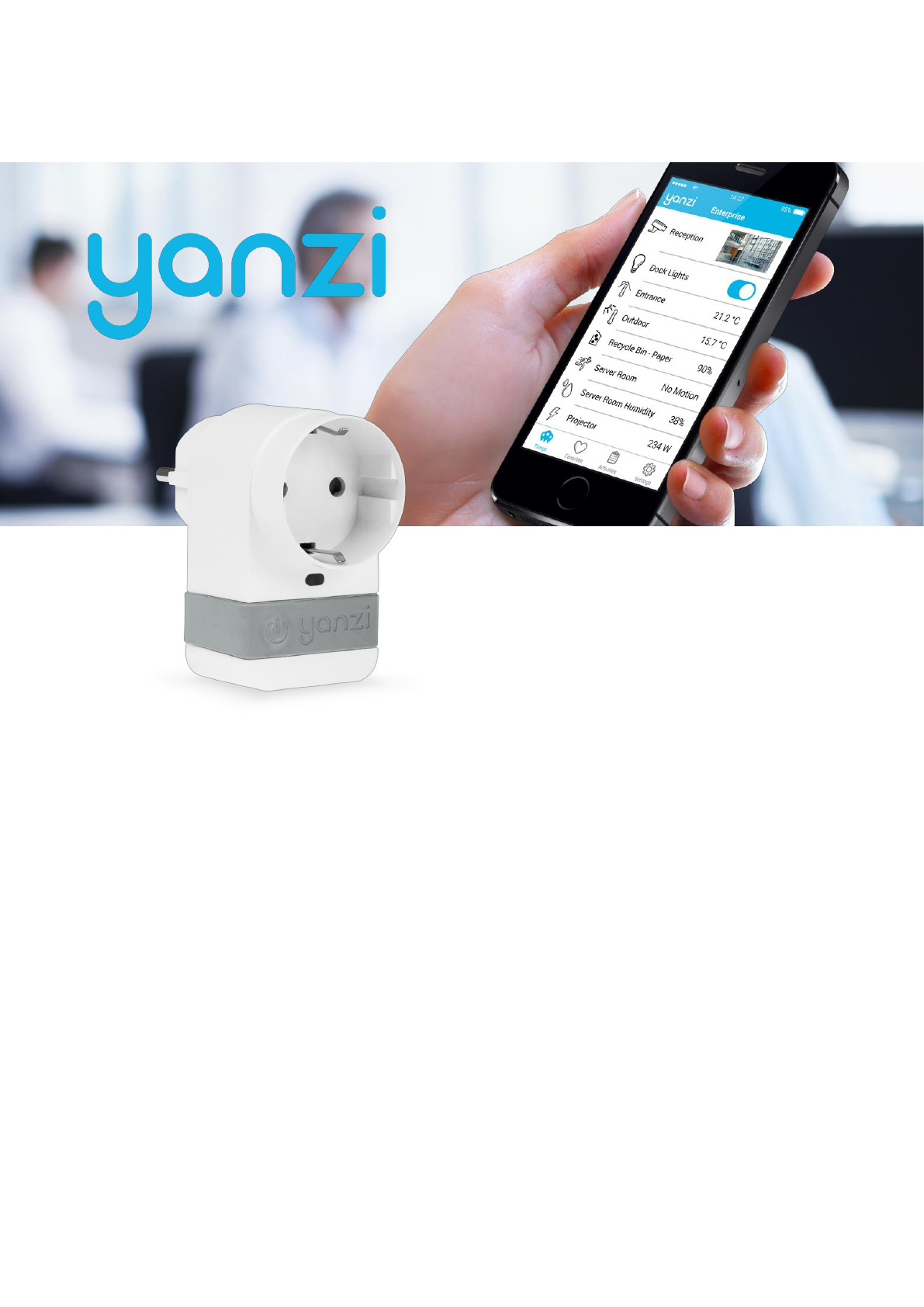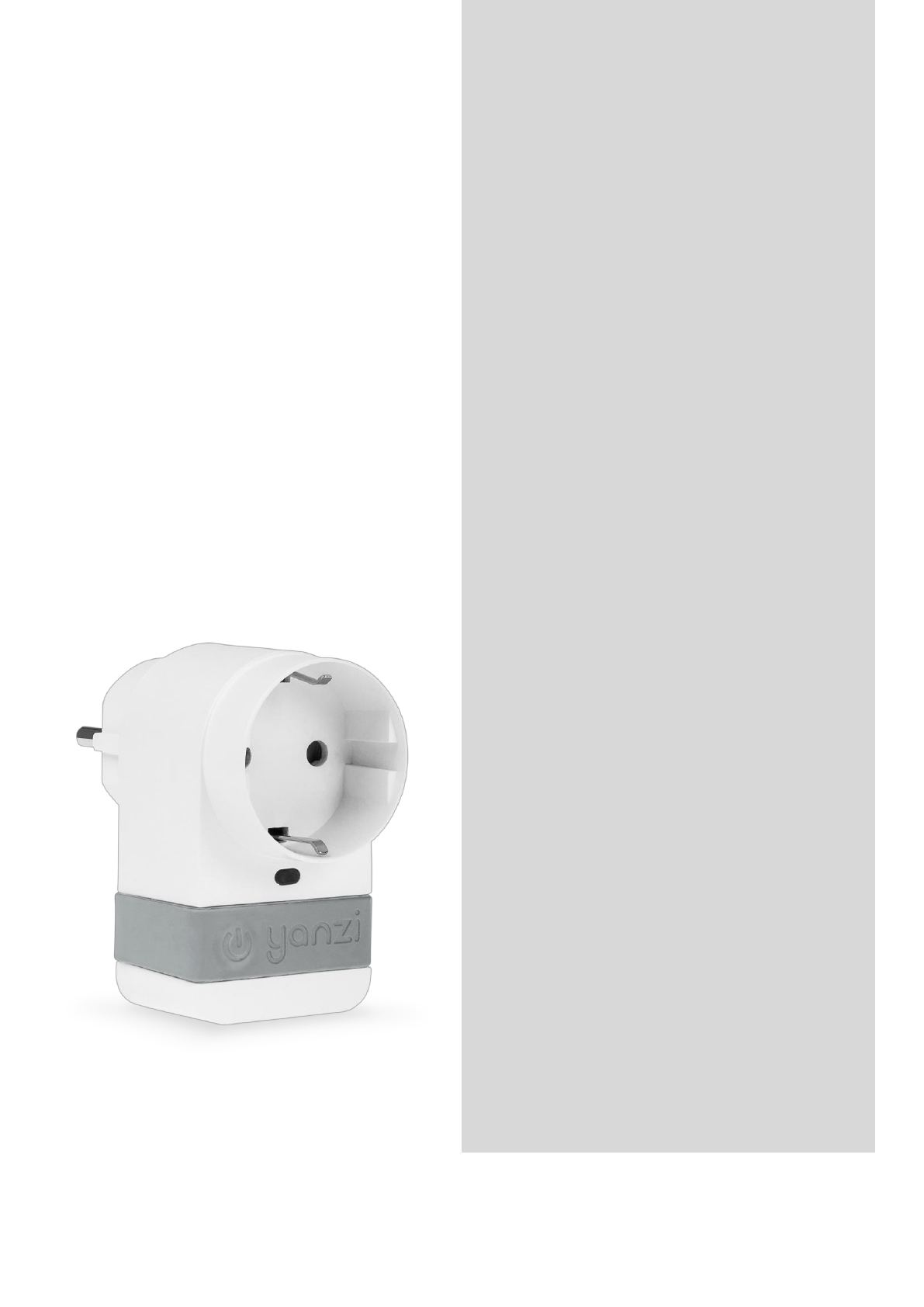Altacogni STW1-E216 STW1-E216 User Manual uesr manual Fifi
Yanzi Networks AB STW1-E216 uesr manual Fifi
uesr manual Fifi

Yanzi Networks reserve the right to change this specification at any time without notice. Disclaimer: Yanzi Networks can not guarantee that this specification is 100% correct.
Yanzi Plug Product Brief Doc No: 890-07056 Ver: 01 Date: 2015-08-19
Yanzi Plug
Yanzi Plug connects your electrical appliances and lamps
to the Internet and allows you to turn them on and off from
anywhere in the world and measure energy or monitor the
health of the power lines.
Yanzi Plug can be used to monitor the energy usage on
work desks, monitor the run time of projector lamps for
preventive maintenance or as an energy savor by using it
together with Yanzi Motion to automatically turn
appliances off, saving energy and money.
Yanzi Plug connects wirelessly to Yanzi Gateway or Yanzi
IoT Access Point in a secure way through Yanzi's “Zero-
Touch configuration” and it can be immediately accessed
through the Cirrus API or the Yanzi App.
Product Brief Yanzi Smart Building Solution

Yanzi Networks reserve the right to change this specification at any time without notice. Disclaimer: Yanzi Networks can not guarantee that this specification is 100% correct.
Yanzi Plug Product Brief Doc No: 890-07056 Ver: 01 Date: 2015-08-19
Highlights
● Simple to install - single tap encryption
setup
● Remotely turn electrical appliances on
and off or set schedules for automatic
control
● Monitor energy consumption of
electrical appliances remotely
For instructions and information about safety, warranty, and recycling, please visit
www.yanzinetworks.com
Getting started
Two steps to get started
1. Plug into power outlet
2. Accept over Cirrus or in Yanzi App
You are now ready to interact with your
Yanzi Plug
Specifications
Power
● Plug and socket types: CEE 7/4,
Type F for European market
● Wide range input voltage
110 - 230VAC, 50-60Hz
● Maximum load power:
2300W, 10A@230V (Resistive Load)
30W, 0.13A@230V (Inductive Load)
● Contact resistance max 100mΩ
● Endurance 10,000 switches
● Built-in over-temperature protection
● Internal power consumption is less
than 0.5W with relay off
Measurement Accuracy
● Minimum detectable power 0.5W
● Accuracy ±5% (0.5 - 5W load)
±4% (5 - 2300W load)
Wireless Performance:
● IEEE 802.15.4 2.4GHz IPv6 Sensor
Network supporting Mesh Technology
● Wireless Output Power
3dBm - 8dBm (~2 - 6.3mW)
● Wireless Range 5-25m indoor,
50 - 100m Line of Sight (Indicative)
● Omnidirectional internal antenna,
0.5dBi peak gain
● ECC/AES encryption. High security with
unique encryption keys for each Yanzi Plug
- automatically installed at setup
Environmental Requirements
● Operating Requirements 0°C to +50°C,
20 - 80% RH(non-condensing)
Indoor use only
● Storage Requirements 0°C to +50°C,
20 - 80% RH(non-condensing)
External Button
● Status (short press)
● On/off (press and hold for >2 s)
● Reset (press and hold for >20 s)
Dimensions
● 43.5 x 76 x 81mm (including AC pins)
Ordering Information
STW1-E216 Yanzi Plug
Doc No: 864-02049, Rev 1
Caution:
This device complies with Part 15 of the FCC. Operation is subject to the following
two conditions: (1) this device may not cause harmful interference, and (2) this
device must accept any interference received, including interference that may cause
undesired operation.
Changes or modifications not expressly approved by the party responsible for
compliance could void the user's authority to operate the equipment.
This equipment has been tested and found to comply with the limits for a Class B
digital device, pursuant to part 15 of the FCC Rules. These limits are designed to
provide reasonable protection against harmful interference in a residential
installation. This equipment generates uses and can radiate radio frequency energy
and, if not installed and used in accordance with the instructions, may cause harmful
interference to radio communications. However, there is no guarantee that
interference will not occur in a particular installation. If this equipment does cause
harmful interference to radio or television reception, which can be determined by
turning the equipment off and on, the user is encouraged to try to correct the
interference by one or more of the following measures:
Reorient or relocate the receiving antenna.
Increase the separation between the equipment and receiver.
Connect the equipment into an outlet on a circuit different from that to which
the receiver is connected.
Consult the dealer or an experienced radio/TV technician for help.